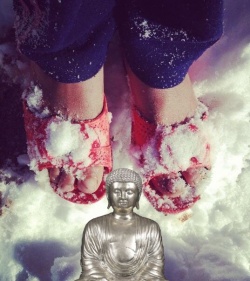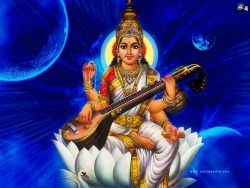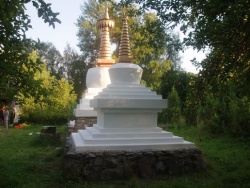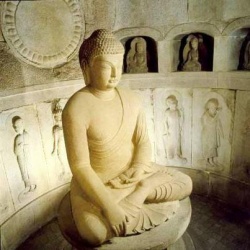The Buddhist Paradox
In contemporary discussions of Buddhism we encounter those who interpret the anatta doctrine to mean there is “no soul” or “no self.” They put forth a version of Buddhism consistent with the philosophy of materialism. This interpretation contradicts teachings on reincarnation and karma and goes against the Buddha’s admonitions against materialism.
A question illustrates the conflict: if there is no being (soul or Self) that continues beyond body death who or what experiences the rebirth of which the Buddha speaks?
It appears the student is left with a stark choice—either accept the anatta doctrine or accept the teachings on reincarnation. Many who advance the “no soul” view choose to dismiss the Buddha’s teachings. They reconfigure Buddhism to fit with their misinterpretation of the “no soul” anatta doctrine.
A third option exists—study the teachings in an effort to understand how the anatta doctrine is consistent with reincarnation. It makes sense to clear up the apparent conflict rather than toss out major portions of the lessons.
Why should a Buddhist concern himself with finding a solution to this apparent paradox? Practice follows theory—incorrect theory causes the practice to suffer. A student given incorrect theory will find his practice goes nowhere. He will not accrue the benefits the Buddha promised.
The reverse is true as well. In the absence of effective practice texts appear confusing. A vicious circle develops. Lacking correct theory, the practice suffers, which in turn causes study of the theory to suffer. Wrong theory at the outset puts the student in a muddle. Therefore, texts and practice must be united into a coherent whole that results in clarity. This effort begins with an analysis of the apparent paradox.
Those who interpret the anatta doctrine to mean “no soul” or “no self” argue that within the aggregate that is a human being there is no soul or real self. They argue all views of self are illusory; there is no enduring soul.
In contrast, the Buddha points out we are not the body, not material objects, and not the things to which we become attached. The Buddha taught there are things which are “not self” and “not soul.” A spiritual Self exists that is not equivalent to any material fabrication.
Those holding the “no soul” view argue a person is comprised only of the aggregates (skandhas): 1) material processes, 2) feeling, 3) perception, 4) mental formations, and 5) consciousness. In the “no soul” interpretation a being that transcends the aggregates does not exist. The aggregates are all that exist. All aspects of a person are impermanent and transitory: nothing survives the dissolution of aggregates upon body death.
The “no soul” adherents dismiss reincarnation in spite of the Buddha’s teachings that include his recall of former lives. In the Buddha’s view, a being, an enlightened Buddha, transcends the aggregates. An enlightened Buddha is an immaterial being that does not possess the properties of the aggregates. This immaterial non-aggregate Self is capable of rebirth.
The “no soul” adherents attempt to get around the dilemma by describing rebirth as a process of aggregates reforming on their own. In this view, the material universe forms and re forms in an ongoing play of material causes. In other words, only the aggregates exist, nothing more.
The Buddha, however, postulates transcendent consciousness or Buddha consciousness beyond the aggregates. He does not limit the analysis to impermanent properties. The non-aggregate being is a Buddha who has achieved detachment from the aggregates.
But isn’t consciousness one of the aggregates? In Buddhism there are categories of consciousness, six in some schools, eight in others. There is aggregate consciousness and non-aggregate consciousness. Aggregate consciousness consists of mental imprints formed as a result of contact with material forms. Buddha consciousness arises after cessation of attachment to the aggregates.
Matthieu Ricard (The Monk and the Philosopher) addresses this when he speaks of both the moment-to-moment stream of impermanent events and the continuous individual stream of consciousness. This “individual stream of consciousness” describes a “self” or “soul” beyond the aggregates. When awakened this is a Buddha.
How was it possible for the Buddha to recall former lives if there was not a continuous individual stream of consciousness that remained in existence over the span of those lifetimes? Continuity of consciousness is necessary for such recall.
The Buddha taught students to cease identifying with the five aggregates. He taught you are not your physical body; not your mind; not your perceptions; not your feelings; not mental imprints. Those qualities are not self. He taught cessation of attachment to those aggregates. The purpose of the practice was to free oneself from attachment and identification with that which was not self, the aggregates.
The practice is ceasing attachment to the aggregates, which begs the question: what ceases attachment? That which can detach from the aggregates must be a non-aggregate being or Buddha whose properties are not the properties of the aggregates.
The Buddha, in his early public lectures, avoided direct statements regarding the Self or Buddha that transcends the aggregates. He avoided describing the result of cessation of attachment to the aggregates. Some mistakenly took this to mean there is no such Self. Why did he appear evasive? First, it is almost impossible to describe a Self that does not have the properties of things. How does one describe that which is completely detached from the aggregates when our language is devoted to describing aggregate properties? The language of thing-ness cannot adequately be used to describe no-thing-ness.
One option was negative or subtractive: describe that which was not the Self. Though we cannot say what a Buddha is we can say what it is not. That is what the Buddha did. In sutra after sutra, he points to the properties of the aggregates and says “this or that is not self.” He used subtractive logic. Take away all properties that do not apply and you are left with a Buddha.
This causes confusion when “that thing is not self” is mistranslated into “there is no self.” When one considers aggregate properties are all that exist one has materialism. And one has nihilism. If one cannot conceive of an existence beyond the aggregates, one cannot conceive of a transcendent Buddha. It is that simple.
The Buddha relied on the practice for clarity. The Self of a Buddha, one who had achieved cessation of attachment to the aggregates, could only be understood firsthand. One cannot convey enlightenment in words; one experiences it directly.
Those who practice diligently and achieve cessation of attachment transcend the aggregates; they find the non-aggregate Self obvious. Those who have not transcended the aggregates may achieve intuitive glimpses but lack certainty. They understand the theory that brings the anatta doctrine in line with reincarnation but lack personal certainty in the matter.
It is incumbent on those who have achieved success in the practice to assist in clearing up the confusion regarding the “no soul” interpretation of the anatta doctrine on the part of those who lack firsthand experience, those prone to altering the teachings to fit their aggregate-bound experience. The “no soul” or “no self” view simply reflects the state of being attached to the aggregates so as long as one is attached one will not understand the detachment the Buddha taught.
Clarity will help unite theory and practice and allow Buddhism to advance, unimpaired by confusion.



